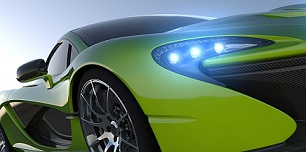More power for natural gas cars

Related topics
Innovation Transport Smart, green and integrated transport Austria Czechia Denmark Finland France Germany Italy Luxembourg Poland Switzerlanddate: 17/01/2014
Project: Integrated gas powertrain - low emission...
acronym: INGAS
See also: Info-centre
Contact: http://www.ingas-eu.org/about.php
More natural gas-fuelled vehicles on European roads would help ensure the EU’s energy security, reduce our dependency on foreign oil, and be better for the environment. For drivers, the long-term cost of operating a natural gas vehicle is also lower, compared to ones running on conventional fuels.
Then why are more people not driving them today? In part, engine performance has not been always satisfactory enough to make them an attractive buy for most drivers.
“Cars and trucks fuelled by compressed natural gas have been available for more than a decade, yet today’s market share of these vehicles is still relatively small,” explains Massimo Ferrera of Italy’s Centro Ricerche Fiat (CRF). “Concerns about engine power and ability to accelerate have limited the uptake of these vehicles among the general public and freight vehicle fleet operators.”
Ferrera is coordinator of the EU-funded INGAS project, which worked to reduce the environmental impact of natural gas-powered vehicles, while maintaining a high level of engine performance.
The project’s main achievement was to design several custom engines that improve their performance, as well as incorporating specific after-treatment systems and several important components, such as lighter tanks.
INGAS’ innovative technologies improve performance and engine efficiency, reducing fuel consumption and greenhouse gases.
“At the same time, innovative lightweight storage systems mean we can further increase vehicle range without affecting trunk space,” Ferrera says.
Additional INGAS features include advanced vehicle structures to protect the tanks in case of crash and the ability to use different grades of natural gas fuel.
“With these technologies, natural gas vehicles can achieve the same performance, they are as much fun to drive, as conventional diesel and petrol vehicles,” Ferrera says.
On the road with natural gas
The new INGAS system could also have a big impact on preserving the environment and meeting Europe’s goals on climate change.
“We have managed to cut CO2 emissions by more than 25 % in comparison with conventional vehicles and by 10% in comparison with current natural gas vehicles,” Ferrera says.
With these results, project partners have demonstrated that the automotive industry can move towards EU targets for road transport-related CO2 reduction, with benefits for human health and the environment.
Some of the new INGAS technologies, including those aimed at reducing fuel consumption and improving range, have already appeared on the market in natural gas vehicles, both cars and light-duty trucks.
“There are currently about one million natural gas vehicles operating on European roads but that number could grow in the short-to-medium term if we can continue to expand natural gas refuelling infrastructure,” says Ferrera.
If natural gas vehicles could achieve a 15% share of the total number of vehicles on EU roads, the resulting cut in CO2 would be 3%, representing about 50 000 tonnes less of greenhouse gas emitted into the atmosphere each year, he adds.
Thanks to natural gas (NG), an abundant, clean burning fuel that already powers 16 million vehicles worldwide. Optimised NG vehicles can benefit at the same time European policies and citizens, and the INGAS and HELIOS projects have developed many technologies that quickly found their way into the market.
The European car industry and its suppliers are in fact the most advanced in proposing factory produced Natural Gas vehicles, with 600.000 deliveries worldwide and millions more converted from existing gasoline vehicles with EU designed kits. The recent boom in Natural gas extraction and use in the US and China might mean new lucrative markets could open up for EU technology and automotive products.
The project’s main achievement was to design several customised NG engines that improve driving performance while cutting CO2 emissions by more than 25 % in comparison with conventional vehicles and by 10% in comparison with previous NG vehicles (while greatly reducing emissions of nanoparticles in comparison to diesels).
The project also developed several important components, such as specific exhaust gas after-treatment systems and lighter tanks which further increase vehicle range without affecting trunk space. While the car manufacturers in the consortium developed the engines and vehicles, the project supported several SMEs in developing specific items that opened new markets for them.
The INGAS team included leading researchers from Europe’s automotive industry, insuring the rapid integration of the resulting technologies in production vehicles.
Many of these products are already on the market, two years after the end of the project, in cars from Fiat, Audi, Volkswagen, Daimler and other EU manufacturers.
